Current Projects
NSF Biological Research Collections Grant

Curator of Insects Derek Sikes received in 2009 a $237,453 National Science Foundation grant to bring the museum's insect collection up to modern standards. The upgrade has greatly increased collection space with new compactors, facilitated specimen databasing and digital photography, and reorganized and integrated the collection making specimens more accessible for researchers. The grant has also supported graduate and undergraduate students working in collections-based entomology.
Installation of new 24 Delta Design cabinets, a new floor, and two new compactor carriages by Spacesaver was completed on 21 Jan 2010. A photogallery showing the old cabinets, the work in progress, and the new cabinets is available at the following link: New Collection Infrastructure
Alaskan arthropods: Baseline biodiversity
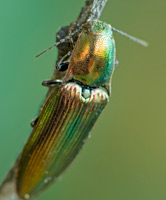
Terrestrial arthropods are the most speciose and diverse animal component of terrestrial
ecosystems, accounting for 80% or more of total described species diversity (Kremen
et al. 1993). Unlike the vertebrates and vascular plants, the invertebrate (primarily
arthropod) fauna of Alaska is perhaps not even half documented. New state, country,
and continent records, and even undescribed species are easily found. Due to Alaska’s
unique biogeographic history its fauna is expected to harbor many elements absent
from the better known Canadian fauna.
The climate of Alaska is changing and we are ill prepared to understand the ecological
community level changes that are bound to result because we do not know the majority
of the “players” involved. Our knowledge of the arthropod fauna is about two centuries
behind that of Sweden (Ronquist et al. 2020). Frustrating our efforts to solve this
problem are a lack of synthetic treatments that summarize the known (i.e. published)
Alaskan arthropod fauna.
Goals of this ongoing project include the consolidation to make accessible information
on this fauna from multiple sources: published literature, the UAM Insect collection,
and other collections with Alaskan holdings such as the Canadian National Collection.
Results to date are available at this link: Draft Checklist of the nonmarine Arthropods of Alaska
Specimen Imaging
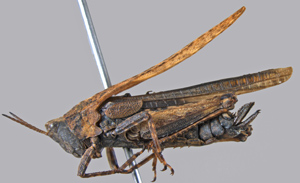
We are beginning a pass through the UAM Insect collection and photographing one specimen
of each species. These photographs will be high-resolution automontage images and
will be available in the UAM specimen database, ARCTOS.
We are seeking volunteers to help with our imaging project. If interested please contact
the Curator, Derek Sikes, dssikes 'at' alaska.edu
To see some examples, click this link for specimens records with images.
We have also been loading our images onto the BugGuide website.
Specimen Barcoding
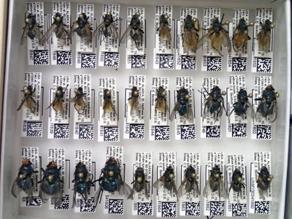
All new accessions and outgoing loans are being databased with each specimen receiving
a 2D matrix barcode label. Vials are stored upside down with barcode label stickers
facing up (see image below). Adhesive is archival, solvent-resistant as made by Electronic
Imaging Materials, Inc.
A somewhat dated but still useful reference on use of barcodes in Entomology: Thompson,
F. C. 1994. Bar codes for specimen data management. Insect Collection News 9:2-4.
Startup costs: Label making software (Seagull BarTender): $245,2D scanner (Symbol
DS6708 scanner): $388»
DNA Barcoding
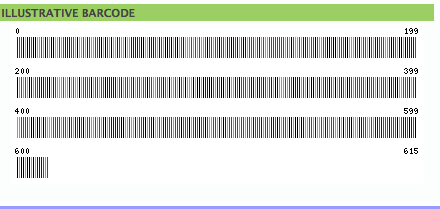
During 2013-2014, with funding from the United States Fish and Wildlife Service, Alaska Region NWRS Inventory and Monitoring Initiative we are building a DNA barcode library of all our authoritatively identified species with recently (<10yr old) specimens. The goal is to obtain DNA barcodes of 2-3 specimens per species of between 1,000 and 2,000 species.
Specimens DNA barcoded to date can be found at this link: DNA Barcoded specimens
We have published on this work: Sikes, D.S., M. Bowser, J. M. Morton, C. Bickford, S. Meierotto, K. Hildebrandt. 2017. Building a DNA barcode library of Alaska’s non-marine arthropods. Genome 60: 248-259 https://doi.org/10.1139/gen-2015-0203
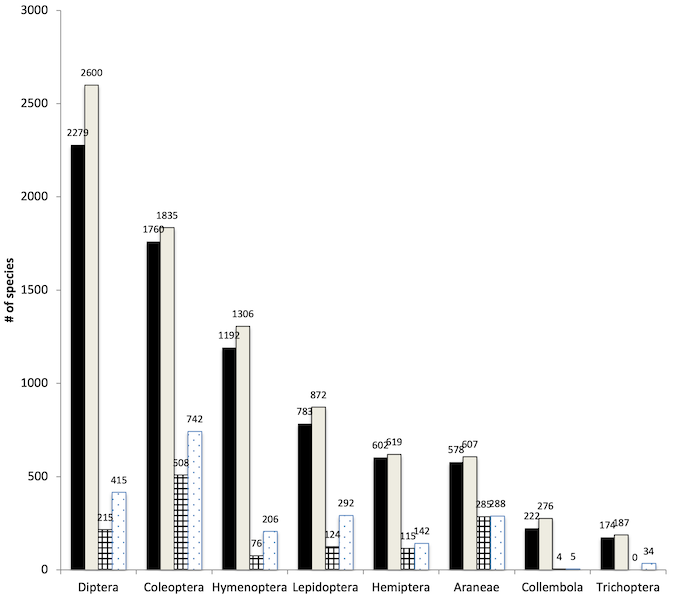
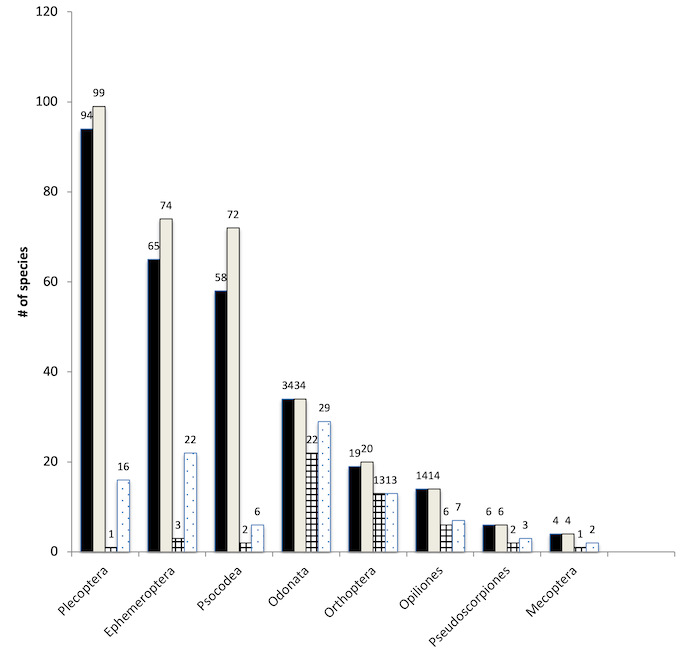
Literature Cited

Kremen, C., R.K. Colwell, T.L. Erwin, D.D. Murphy, R.F. Noss and M.A. Sanjayan. 1993.
Terrestrial arthropod assemblages: Their use in conservation planning. Conservation
Biology 7: 796-808.
Ronquist, et al. 2020. Completing Linnaeus’s inventory of the Swedish insect fauna: Only 5,000 species left?. PloS One, 15(3): p.e0228561.
